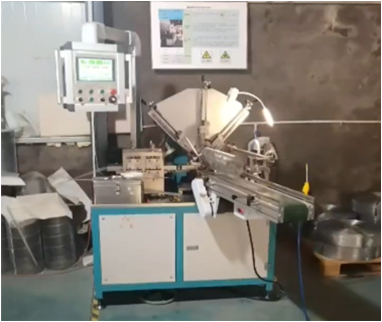 Tel:
+8615930870079
Tel:
+8615930870079
Nov . 30, 2024 03:04 Back to list
Efficient Dust Filter Cartridge Solutions for Clean Air Systems and Enhanced Performance
Understanding Dust Filter Cartridges Importance, Types, and Maintenance
Dust filter cartridges are fundamental components in various industries and settings where air quality is crucial. They play a vital role in capturing particulate matter, ensuring a safer and cleaner environment for both workers and machinery. In this article, we will explore the importance of dust filter cartridges, the different types available, and tips for their maintenance to maximize efficiency and lifespan.
The Importance of Dust Filter Cartridges
Dust filter cartridges are designed to remove airborne particles, such as dust, pollen, mold spores, and other pollutants. Their importance cannot be overstated, as these pollutants can adversely affect human health, leading to respiratory issues, allergies, and other health complications. In industrial settings, excessive dust can also pose risks to equipment, potentially leading to increased maintenance costs and downtime.
In addition to health benefits, using dust filter cartridges can enhance operational efficiency. By maintaining a clean and particulate-free environment, companies can improve the performance and lifespan of their machinery. Dust accumulation on equipment can lead to overheating and failure, whereas effective filtration helps maintain optimal working conditions.
Types of Dust Filter Cartridges
There are several types of dust filter cartridges, each designed to handle different applications and types of particulate matter
1. Pleated Cartridges These cartridges have a pleated design that increases the surface area for filtration, allowing for higher efficiency in capturing fine particles. They are suitable for various applications, including factory settings and HVAC systems.
2. HEPA Cartridges High-Efficiency Particulate Air (HEPA) filters are known for their ability to capture 99.97% of particles as small as 0.3 microns. These cartridges are ideal for environments that require strict air quality standards, such as laboratories, hospitals, and clean rooms.
3. Activated Carbon Cartridges These filters contain activated carbon that adsorbs volatile organic compounds (VOCs) and odors in addition to particulate matter. They are particularly useful in environments with chemical fumes or strong odors, such as printing facilities and food processing plants.
dust filter cartridge

4. MERV Rated Cartridges Minimum Efficiency Reporting Value (MERV) ratings classify filters based on their ability to capture particles of varying sizes. Higher MERV ratings indicate better filtration performance, making these cartridges suitable for a range of applications from residential to commercial and industrial settings.
Maintenance of Dust Filter Cartridges
Regular maintenance and timely replacement of dust filter cartridges are essential for ensuring optimal performance. Here are some tips for maintaining dust filter cartridges
1. Regular Inspections Regularly check your filtration system for any signs of wear, dirt buildup, or damage. Monitoring the condition of cartridges helps identify when it’s time for replacement.
2. Scheduled Replacements Depending on the cartridge type and the levels of dust and pollutants in your environment, schedule replacements accordingly. As a general rule, replace cartridges every 6 to 12 months, but more frequent changes may be necessary in dirty environments.
3. Cleaning Some filter cartridges can be cleaned and reused. However, be cautious, as improper cleaning can lead to damage or reduced filtration efficiency. Always follow manufacturer guidelines when considering cleaning as an option.
4. Environmental Controls Consider implementing environmental controls to reduce dust generation. This may include measures such as using dust suppressants, improving ventilation, and employing dust collection systems.
5. Professional Advice Consult with filtration specialists to determine the best type of filter cartridge for your specific needs and to establish a maintenance schedule that suits your operational requirements.
Conclusion
In conclusion, dust filter cartridges are essential components in promoting clean air and operational efficiency in various environments. Understanding the types available and how to maintain them ensures that you protect both health and machinery. By investing in quality filtration solutions and adhering to best maintenance practices, industries can achieve cleaner, safer habitats for workers and improved performance for their equipment.
-
Types and Applications of Air Filtration CartridgesNewsJul.28,2025
-
The Role of Gas Turbine FiltersNewsJul.28,2025
-
Mastering Air Filter Cartridge UseNewsJul.28,2025
-
Advanced Turbine Filters for Modern Gas TurbinesNewsJul.28,2025
-
Cellulose Air Filter Cartridge Advantages in Dust FiltrationNewsJul.28,2025
-
Cellulose Filters for Air Particle ReductionNewsJul.28,2025

 Email:
Email:





